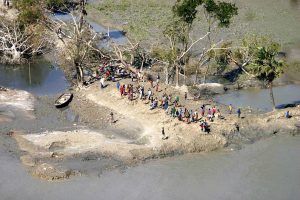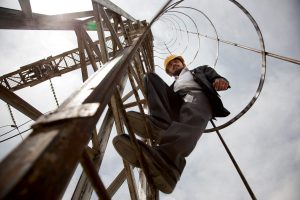A major new report warns some of the world’s most iconic heritage sites are increasingly vulnerable to the impacts of global warming and the tourist industry, but overlooks the threats posed by wider development and resource extraction.
Popular tourist destinations such as Venice, the Galapagos Islands and the port city of Cartagena in Colombia are listed among the 31 sites in 29 countries under threat from rising sea levels, melting glaciers, droughts and wildfires in a report by UNESCO, the UN Development Programme and the Union of Concerned Scientists (UCS).
There are over 1,300 UNESCO World Heritage Sites, places considered to be of special cultural or physical significance.
Climate threats
“Achieving the Paris Agreement’s goal of limiting global temperature rise to a level well below two degrees Celsius is vitally important to protecting our world heritage for current and future generations,” said Mechtild Rössler, director of UNESCO’s World Heritage Center.
In addition to the adverse impacts of a warmer planet, the booming global tourism industry itself, which is responsible for 9% of the world’s GDP, multiplies the threats posed by climate change since it increases transport emissions and competition over resources such as water. Tourism-related infrastructure in the form of hotels, harbours and airports bring economic benefits for developing countries but add to environmental pressures at vulnerable sites, the report says.
Adam Markham, lead author of the report and deputy director of the Climate and Energy Program at UCS said tourist attractions such as the Easter Island statues are at risk of being lost to the sea because of coastal erosion. Meanwhile, many of the world’s most important coral reefs have suffered unprecedented coral bleaching linked to climate change.
Yet the report omits perhaps the world’s most famous coral reef and other notable sites vulnerable to climate change. Australia’s Great Barrier Reef was included in a draft version of the report but scratched from the final one following a request from the country’s environment ministry, the BBC reported.
A statement released by the Department for the Environment complained that the report conflated the issues of sites’ World Heritage status and the risks posed by tourism and climate change. If the impacts on sites meant they no longer exhibited unique man-made or naturally occurring phenomena, they would lose their status as sites worth preserving.
The statement also complained of the impact of such negative press coverage on Australia’s tourism industry.
One of China’s major UNESCO sites – The Three Parallel Rivers protected area in southwest Yunnan province – also fails to get a mention. This region contains the headwaters of the Nu (Salween), Mekong and Yangtze (Jinsha) rivers and particularly vulnerable to climate change. It sits on the edge of the Tibetan plateau, which is warming at three times the global average, leading to widespread desertification. Proposals to build a cascade of 13 mega dams on the Nu could also jeopardise the site. The boundaries of the reserve have already been shifted to allow for large-scale gold and copper mining.
Human impacts
The report points to the cumulative risks on heritage sites of other factors including the lack of resources for effective management, war, terrorism, poverty, urbanisation, infrastructure and oil and gas development.
But it fails to elaborate on the risks posed by other types of infrastructure projects not directly associated with the tourism industry.
For example, the potential impacts of massive hydropower developments on the UNESCO-protected Los Glaciares national park in Argentina are notably absent. The recently approved dams on the Santa Cruz river threaten the Perito Moreno, Spegazzini and Upsala glaciers, according to local conservationists.
The project, which has been years in the planning and will add 5% to Argentina’s energy capacity, got the green light despite complaints by green groups that no valid environmental impact assessment had been presented.
According to experts, the dam reservoir will shift the river flow and erode the front of the iconic Perito Moreno glacier stopping blocks of ice from breaking off, a phenomenon that attracts many thousands of tourists each year.








